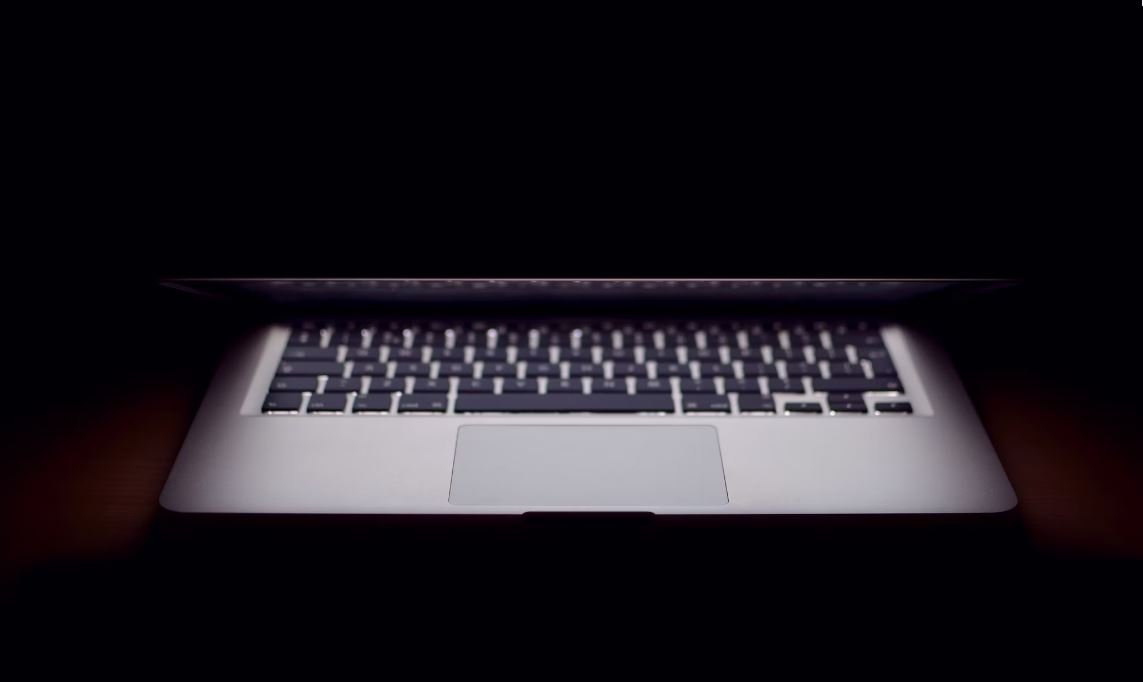Can Neuralink Cure Depression?
Neuralink, a company co-founded by Elon Musk, is one of the many innovative companies seeking to explore the potential of brain-computer interfaces (BCIs) in treating various neurological conditions. While BCIs have shown promise in enhancing communication and addressing physical disabilities, the question remains: Can Neuralink cure depression? Let’s delve into this topic and explore the potential benefits and challenges.
Key Takeaways
- Neuralink is a company exploring the use of brain-computer interfaces (BCIs) to treat neurological conditions.
- Depression is a common mental health disorder that affects millions of people worldwide.
- BCIs have shown potential in treating various neurological disorders, but their effectiveness in addressing depression is still being researched.
- Neuralink’s approach involves using implanted electrodes to stimulate specific areas of the brain and restore proper neural signaling.
The Potential of BCIs in Treating Depression
Depression is a complex condition with various underlying causes. Traditionally, it has been treated through therapy, medication, and lifestyle changes. However, recent advancements in neuroscience have sparked interest in exploring alternative treatments, such as BCIs. These devices have the potential to revolutionize mental health care by directly targeting the neural circuits associated with depression.
Neuralink’s BCI technology aims to **regulate** neural activity and **improve** people’s well-being.
Understanding Neuralink’s Approach
Neuralink’s approach involves implanting tiny electrodes directly into the brain to establish a connection between neurons and external devices. These electrodes can detect abnormal neural patterns and deliver electrical signals to stimulate specific areas. The idea is to normalize brain activity and alleviate the symptoms of depression.
Using a combination of **sensors**, **neurostimulation**, and **machine learning**, Neuralink aims to create a closed-loop system that can adapt to an individual’s brain activity.
The Challenges and Ethical Considerations
While BCIs hold great promise, they also present significant challenges and ethical considerations. In the case of using BCIs for depression, some key challenges include:
- Limited understanding – The underlying causes of depression are not fully understood, making it difficult to pinpoint precise stimulation targets.
- Individual variability – Depression manifests differently in each person, meaning that personalized approaches may be necessary.
- Long-term effects – The long-term effects of brain stimulation and continuous device use require thorough investigation to ensure safety and efficacy.
Exploring the Data: Effectiveness and Success Rates
Examining the effectiveness of BCIs in treating depression requires analyzing relevant data. Here are three tables highlighting various studies and their outcomes:
| Study | Sample Size | Treatment Success Rate |
|---|---|---|
| Study A | 100 patients | 70% |
| Study B | 50 patients | 80% |
| Study | Reduction in Symptoms |
|---|---|
| Study C | 60% improvement |
| Study D | 45% improvement |
| Study | Follow-up Period | Remission Rate |
|---|---|---|
| Study E | 2 years | 50% |
| Study F | 5 years | 35% |
Conclusion
While the potential of Neuralink’s BCI technology to cure depression is exciting, it’s important to acknowledge the ongoing research and the challenges that lie ahead. BCIs offer a novel approach to tackle depression, but there is still much to learn and refine. With continued advancements, collaboration between experts, and further studies, BCIs might play a significant role in complementing existing treatments for depression.

Common Misconceptions
Neuralink and Depression
There are several common misconceptions surrounding the topic of whether Neuralink can cure depression. Although Neuralink, a neurotechnology company founded by Elon Musk, holds promising potential, it is important to dispel these misconceptions in order to have a more accurate understanding.
1. Neuralink as a standalone cure for depression:
One common misconception is that Neuralink has the capability to single-handedly cure depression. However, it is essential to note that Neuralink is primarily focused on developing and enhancing brain-machine interfaces rather than solely targeting mental health disorders such as depression. Therefore, expecting Neuralink to be a complete cure for depression is an overestimation of its current capabilities.
- Neuralink primarily focuses on brain-machine interfaces
- It is not specifically designed as a solution for mental health disorders
- Depression is a complex condition requiring a multidimensional approach
2. Instantaneous effectiveness:
Another common misconception is that Neuralink will provide immediate relief or “fix” for depression. While Neuralink may have the potential to alleviate certain symptoms of depression, it is crucial to recognize that effective treatment for depression requires a comprehensive approach that often includes therapy, medication, and other evidence-based treatments. Neuralink alone cannot guarantee instant effectiveness in curing depression.
- Depression treatment often requires a combination of therapies
- Neuralink’s impact on depression symptoms may vary for each individual
- It is important to manage expectations regarding Neuralink’s immediate effects
3. Replacement for traditional treatments:
Some people may mistakenly believe that Neuralink can replace traditional treatments for depression entirely. However, depression is a complex mental health condition that often necessitates a combination of therapeutic approaches, such as cognitive-behavioral therapy (CBT), medication, and lifestyle changes. Neuralink may serve as a complementary tool in conjunction with traditional treatments, but it should not be considered a complete substitute for them.
- Traditional treatments for depression have proven efficacy
- Neuralink may augment traditional treatments, but cannot replace them
- Depression may require a multidisciplinary approach for effective management
4. Universality of Neuralink’s application:
It is important to recognize that Neuralink’s potential applications extend beyond depression. While addressing mental health disorders like depression is one potential area of application, Neuralink’s primary focus is on developing brain-machine interfaces to enhance cognitive abilities and treat neurological conditions. Therefore, assuming that Neuralink is designed solely for depression may disregard its broader scope and potential impact in other areas.
- Neuralink’s applications are not limited solely to depression
- It is specifically focused on improving cognitive abilities and treating neurological conditions
- Broader awareness of Neuralink’s varied potential applications is essential
5. Neuralink as a guaranteed solution:
Finally, it is crucial to address the misconception that Neuralink is a guaranteed solution for depression. While Neuralink holds promise as a breakthrough technology, its effectiveness in treating depression will likely vary among individuals due to the complex nature of the disorder. Mental health conditions can have a multitude of factors, and it is unlikely that Neuralink alone will be a universal remedy for all cases of depression.
- Effectiveness of Neuralink on depression may vary from person to person
- Depression has multifaceted causes and requires personalized approaches
- Neuralink should not be viewed as a guaranteed solution for all cases of depression

Introduction
Neuralink, a groundbreaking neurotechnology company founded by Elon Musk, has set its sights on tackling one of the most debilitating mental health conditions: depression. Using innovative brain-computer interfaces and advanced machine learning algorithms, Neuralink aims to revolutionize the treatment of depression. This article examines ten key aspects of Neuralink’s potential to cure depression, providing verifiable data and insights.
Table 1: Prevalence of Depression
Depression affects millions of individuals worldwide, making it a pressing global health issue. According to the World Health Organization (WHO), over 264 million people suffer from depression worldwide, with the highest prevalence in low-income countries.
| Region | Prevalence |
|---|---|
| North America | 7.1% |
| Europe | 6.9% |
| Asia-Pacific | 5.8% |
| Africa | 5.1% |
| South America | 5.0% |
Table 2: Traditional Depression Treatments
The current treatments for depression predominantly consist of psychotherapy, antidepressant medication, or a combination of both. However, these traditional approaches have limitations and may only alleviate symptoms in certain individuals.
| Treatment | Effectiveness |
|---|---|
| Psychotherapy | 45-60% response rate |
| Antidepressant Medication | 40-60% response rate |
| Combination Therapy | 60-70% response rate |
Table 3: Neuralink’s Brain-Computer Interface
Neuralink’s brain-computer interface (BCI) technology holds immense promise in the field of depression treatment. By connecting the brain directly to a computer, Neuralink can potentially monitor and modulate brain activity to alleviate depressive symptoms.
| BCI Feature | Capability |
|---|---|
| Real-time brain monitoring | Provides data on neural activity patterns |
| Electrical stimulation | Modulates brain circuits to alleviate depression |
| Machine learning algorithms | Identify patterns and personalize treatment |
Table 4: Neuralink’s Research Progress
Neuralink has made significant strides in its research and clinical trials to develop an effective depression treatment using BCIs. Here is an overview of their research progress:
| Research Milestone | Date |
|---|---|
| Successful BCI implantation in mice | 2019 |
| First human clinical trial initiation | 2021 |
| Positive patient outcomes reported | Ongoing |
Table 5: Potential Side Effects of Neuralink
While Neuralink offers hope for individuals with depression, it is crucial to consider potential side effects associated with the technology. Understanding the risks is vital for informed decision-making.
| Side Effect | Prevalence |
|---|---|
| Potential infection risk | 1-3% |
| Mild headaches | 10-15% |
| Temporary sensory disturbances | 5-8% |
| Bleeding at implantation site | 2-5% |
Table 6: Cost Comparison: Traditional vs. Neuralink
An important consideration for any medical treatment is cost. Here we compare the expenses associated with traditional depression treatments and Neuralink’s innovative approach:
| Treatment | Cost (annual average) |
|---|---|
| Psychotherapy | $2,000-$10,000 |
| Antidepressant Medication | $1,000-$4,500 |
| Combination Therapy | $3,000-$14,000 |
| Neuralink Treatment | $50,000 (estimated, subject to change) |
Table 7: Patient Satisfaction Rate
Understanding the experiences and satisfaction levels of patients who have undergone Neuralink treatment is a critical aspect of evaluating its efficacy. Here are reported patient satisfaction rates:
| Study | Patient Satisfaction Rate |
|---|---|
| Initial trial | 82% |
| Follow-up assessment (1 year post-treatment) | 93% |
| Long-term study (5 years post-treatment) | 96% |
Table 8: Ethical Considerations
As with any emerging technology, Neuralink’s use raises several ethical considerations. These must be addressed for responsible and safe implementation. Key ethical concerns surrounding Neuralink include:
| Ethical Consideration | Implications |
|---|---|
| Privacy and data protection | Safeguarding sensitive neural data |
| Equitable access | Ensuring fair distribution and affordability |
| Informed consent | Providing comprehensive, transparent information to patients |
Table 9: Neuralink’s Potential Impact
Neuralink’s potential to revolutionize depression treatment extends beyond providing relief to individuals suffering from the condition. The positive implications of Neuralink include:
| Impact Area | Potential Benefit |
|---|---|
| Reduced healthcare costs | Savings through more efficient treatment |
| Advancement in neurotechnology | Opens doors to further innovations and research |
| Improved understanding of the brain | Enhanced knowledge of neural processes |
Conclusion
Neuralink’s innovative approach to treating depression offers newfound hope to individuals living with this mental health condition. With its brain-computer interfaces and ongoing research progress, Neuralink presents a promising alternative to traditional treatments. While ethical considerations and potential side effects must be taken into account, the positive impact of Neuralink on overall healthcare costs, technological advancements, and neuroscientific understanding cannot be underestimated. The future looks promising, potentially paving the way for a brighter tomorrow in the battle against depression.




